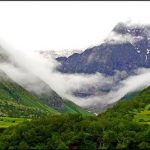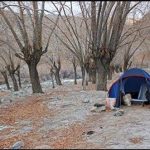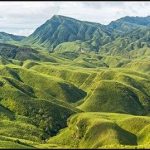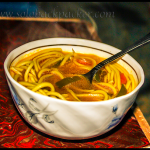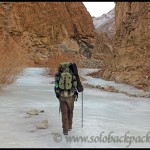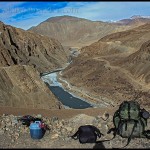The Union Territory of Ladakh is located in the Indian Himalayas, in the laps of the Karakoram mountain range. It boast some of the most rugged mountainous landscapes on earth. Ladakh, comprising Leh and Kargil districts, is sandwiched between China in the east, Kashmir in the west, Pakistan in the north and Himachal Pradesh in the south. Ladakh literally means “land of high passes” and it is home to the highest motorable mountain passes in the world.
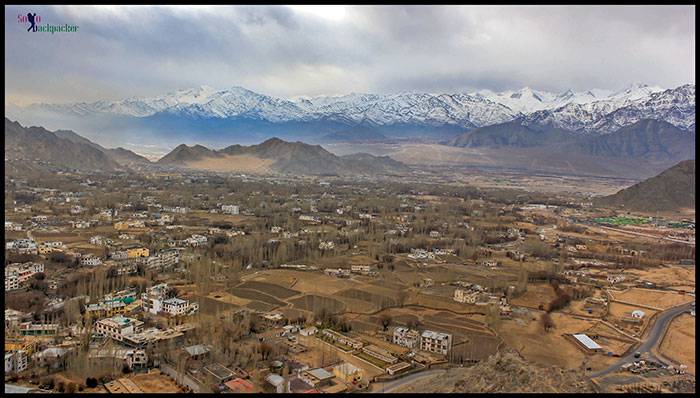
Ladakh used to be a Buddhist kingdom and the region is well-known for its impressive monasteries. Ladakh is often called “Little Tibet” due to the strong influence of Tibetan culture. Ladakh also has an important Muslim community, especially in Kargil district.
Contents
a) By Road
b) By Train
c) By Air
4. How to Travel Around in Ladakh?
6. Main Places to Visit in Ladakh
7. Tips For Travelling Responsibly in Ladakh
1. How to Reach Ladakh?
Leh is the capital city of Ladakh and the most famous destination for tourists. It is located at an elevation of 3,500 m above sea level in the heart of the Indus valley. Leh used to be an important trade centre on the Silk Road. Here, you can find many hotels and restaurants for all kind of budgets.Ladakh can be accessed either by air or by road.
a) By Road
There are two highways that connect Ladakh with the rest of the India. The Leh-Manali highway is about 470 kms long and considered as the adventurer’s delight. The other option is to take the Leh-Srinagar highway via Kargil and Zoji La (3,530 m).
Manali-Keylong-Leh Route:
If we talk about the road trip to Ladakh, then this is the most recommended route. However, it stands available for few months only from the first week of June to the second week of October. The highway comes alive in the month of June and hundreds of bikers, cyclists, enthusiastic drivers and adventure seekers rushed on Manali-Leh Highway to get Leh’d every year.
The road journey from Manali to Leh is about 470 kms long and requires to cross the high-altitude passes of Rohtang La (3978 m), Baralacha La (4890 m) , Nakee La(4769 m), Lachung La (5059 m) and Taglang La (5328 m). The journey can be completed in two days by any kind of vehicle. People do try completing this in a day, but it’s better to be late than never.
If you travel by your own vehicle, then you can complete this journey in two days. You should make a night halt at Keylong (3080 m), Jispa (3200 m) or Sarchu (4290 m). Budget hotels and tented accommodations are available at these places. Keylong and Jispa are relatively early stop on this road, but they offer comfortable night stays. Sarchu is relatively closer to Ladakh and primarily has the tented accommodation. It provides a true chance to enjoy the Himalayan wilderness in the night, but it is also prone to the extremely frigid nights and adverse weather.
It is advisable to stay at Jispa (or Keylong) rather than Sarchu while travelling from Manali to Ladakh. It is pleasant to stay at the lower altitude during the night to prevent the risk of mountain sickness. The disadvantage of staying at Keylong and Jispa is that you would still have a long way to go to Leh (358 kms from Keylong and 335 kms from Jispa) and may require one more night halt somewhere. From Sarchu, Leh is only 250 kms away. After crossing Sarchu, the next accommodation option is available at Pang (4700 m, 174 kms to Leh).
Night stay is always a tricky part on Manali-Leh Highway while going from Manali to Leh. This is due to the acclimatization issue at high altitude that may lead to the Acute Mountain Sickness (AMS). During the return journey from Leh, this is not an issue. Your body is already acclimatized during the return journey after spending few nights in Ladakh. Therefore, it is always advisable to allow proper rest and pay attention to AMS without travelling in hurry. Choose your night stay accordingly.
If you don’t want to travel by your own vehicle and wish to use the public transport, then you have the options of shared public buses run by Himachal Road Transport Corporation (HRTC) and Himachal Pradesh Tourism Development Corporation (HPTDC). They operate few buses on Delhi-Manali-Leh route:
Delhi-Leh Bus: The direct Delhi-Leh ordinary bus service is operated by HRTC. It takes about 52 hours to complete this journey from Delhi to Leh (1010 kms), with a night halt at Keylong. The bus leaves Delhi ISBT (Kashmiri Gate) at 02.30 PM and reaches Keylong 02.00 PM next day. Approx 24 hours journey from Delhi to Keylong is a continuous one with scheduled stop for food and passengers pick up at Chandigarh (08.30 PM) and Kullu (05.30 AM). After reaching Keylong, the bus stop for the night halt. In the morning, it starts at 05.00 AM and reaches Leh at about 06.00 PM. The bus fare is Rs. 1380 per passenger. You have to arrange a night stay at Keylong by yourself.
In the opposite direction, the bus leaves Leh at 05.00 AM and stops in Keylong for the night stay. It again starts from Keylong at 06.30 AM and reaches Delhi at 03.30 AM next day.
Manali-Leh Two Days Bus Service: The direct ordinary Manali-Leh bus service is operated by HRTC. It takes around 35 hours to complete this journey from Manali to Leh, with a night halt at Keylong. The bus leaves Manali Bus Stand at 08.00 AM and reaches Keylong at 02.00 PM. It stops there for the night halt. In the morning, it starts at 05.00 AM and reaches Leh in the evening. The bus fare is approx Rs.750 per passenger. You have to arrange a night stay at Keylong by yourself.
Manali-Leh One Day Service: The direct Manali-Leh bus service is operated by HRTC. It takes around 16 hours to complete this journey from Manali to Leh with slight breaks for the food and toilet. The bus leaves Manali Bus Stand at 04.00 AM and reaches Leh at about 08.00 PM. The bus fare is approx Rs.850 per passenger.
Note: Please keep in mind that these buses are ordinary buses with no seating comfort. Pay attention to your health and physical endurance while choosing a bus service from Delhi/Manali to Leh. Acclimatization should be in your mind while opting for a bus journey.
Manali-Leh HPTDC Buse Service: HPTDC offers a more comfortable solution to travel from Manali to Leh by a bus. It operates a daily Manali-Leh bus service using semi deluxe buses. The bus leaves Manali Bus Stand at 10.00 AM and reaches Keylong at 04.00 PM. It stops there for the night halt. In the morning, it starts at 04.00 AM and reaches Leh at about 07.00 PM. The bus fare is approx Rs.2900 per passenger, that includes dormitory accommodation, dinner, and breakfast at HPTDC Hotel Chandrabhaga at Keylong.
Note: HPTDC bus also offers an advantage over HRTC buses. Since the bus is operated by the tourism department, it stops at all major tourist attractions and high altitude passes for few minutes, so that the passengers can enjoy the scenic beauty on this highway.
Apart from these, few travel agencies also operate 2×2 buses and tempo travellers between Manali and Leh during the tourist season.
Jammu-Srinagar- Zoji La-Kargil-Leh Route
This is relatively longer road trip from Delhi to Leh. During the monsoon and winter season, it may get restricted due to the excessive rains or the snowfalls. The road journey includes two steps basically: First is to reach Srinagar from anywhere in India and then the second one is a road trip on Srinagar-Kargil-Leh Highway.
Srinagar can be reached in two days by road from Delhi with a preferable night stop at Jammu. From Srinagar, the public transports are available for the onward travel to Ladakh.
Srinagar-Kargil-Leh Bus Service: The bus service is operated by Jammu & Kashmir State Road Transport Corporation (JKSRTC). The bus leaves from Srinagar (Tourist Reception Centre near Dal Lake) at 08.00 AM. It stops in Kargil for the night halt. On the next day, it starts from Kargil at 07.00 AM and reaches Leh by the evening. Depending on the booking, the bus may be a super deluxe or a semi-deluxe type. The fare is Rs. 1400 per person for the super deluxe and Rs.950 per passenger for the semi-deluxe services. During the peak tourist season, JKSRTC may operate an additional ordinary bus from Srinagar to Leh. The fare for ordinary bus is Rs.500 per person. The hotel cost for night stay at Kargil is not included in the ticket prices.
Apart from the government operated buses, many private operators also offer bus services and shared jeep services from Srinagar to Leh. The private bus services are primarily offered on Tempo Travellers or mini buses. The ticket prices vary from Rs.1200-Rs.1500 per person. Private buses typically operate without a night halt at Kargil. However, the travel time is highly dependable on the traffic conditions at Zoji La Pass. Sometimes, the army may restrict to one way traffic only between Sonamarg and Kargil.
Which Route is Better?
It depends on the available time as well as your preferences for this once in a lifetime trip. Both routes are strenuous and demand good physical endurances. Both offers magnificent natural vista with an inherent risk of Acute Mountain Sickness (AMS), however the risk of AMS is slightly more at Manali-Leh highway. If you have sufficient time, it is advisable to reach Leh via Srinagar, Kargil and plan a return journey via Keylong,Manali. Srinagar-Leh route is longer and ascend is gradual.
It takes about 4 days to complete this journey from Delhi to Leh with night stops at Jammu, Srinagar and Kargil. If you wish to explore the breathtakingly beautiful Kashmir Valley and Pir Panjal Ranges of the Himalayas, you may keep going for many more days in the valley. It helps you to gain the altitude gradually and acclimatize properly.
Return journey via Manali highway also offers two advantages: 1) You get enough time to visit Tso Moriri without worrying about AMS. 2) You don’t need a permit for Rohtang La while returning from Leh.
b) By Train
There is no direct train to Leh. Manali and Leh, both places don’t have any railway network. If you wish to proceed by a train from Delhi, then you can leave the train at Chandigarh. From Chandigarh ISBT (Sec43) you can get Delhi-Leh bus at about 8.30 PM for onward journey.
c) By Air
There are many flights from New Delhi to Leh all year round. The direct flights are also available from Mumbai between June and September. Flight prices tend to be very costly during the tourist season. You can get better bargains on the flight prices during the winter months to experience Ladakh in winter. If the flight prices are significantly high during the tourist season and time is not an issue, you can fly to Srinagar at relatively affordable prices. From Srinagar, you can reach by a single day road journey on Srinagar-Kargil-Leh Highway.
Note: Do not exert yourself for the couple of days, if you reach Leh by air. It is more sensible to stay and roam around your hotel in the city. Enjoy visiting local attractions of Leh during this period like Leh Palace, Shanti Stupa, Shey Palace, Thikse Monastery, etc. Never try to travel towards Nubra Valley or Pangong Lake within 3-4 days of your arrival at Leh by Air. You never know when AMS would strike you, and that could be fatal.
2. Best Time to Visit Ladakh
Ladakh is not a small town. It is a wide geographical area where you get something stunning in every season. However, travel to Ladakh depends on the two factors:
1) Road Availability: The road to Ladakh gets closed during the heavy snowfall in the winter. Similarly, it may get closed during the monsoon months in case of excessive rains. Ladakh itself lies in a rain shadow zone , therefore monsoon in not an issue to explore the Ladakh Region.
2) Tourist Season: Due to the road availability factor, the main tourist season of Ladakh starts from the first week of June and ends by the second week of October. During this period, all the shops and hotels remain open and Ladakh enjoys the heavy footfall of the tourists. This is the time when you get everything at inflated prices including air tickets, hotels and cabs. This is also the time when you can expect less disturbance in your itinerary due to the weather conditions and can have a peace of mind.
3. Ladakh in Winter
Visiting Ladakh in winter is also a very special experience but be ready for freezing temperatures. Ladakh is not accessible by road in winter as both the Leh-Manali and Leh-Srinagar highways are closed because of heavy snowfall. Since the roads are obstructed in winter, taking a flight is the only way to reach Ladakh. Very few tourists visit Ladakh during the winter. Most of the hotels and guesthouses stay closed during the winter, therefore an advance coordination is required for accommodation. The roads within Ladakh are open in winter.
Main tourist areas of Leh like Lamayaru Monastery, Alchi Monastery, Hemic Monastery, Thikse Monastery, Shey Palace etc. are conveniently accessible with the hired vehicles. Few attractions like Leh Palace are closed for the visitors during the winter months. You can only visit them from the outside.
Hanle, Tso Moriri, Pangong Lake and Nubra Valley are also accessible, but the road may get closed anytime in case of excessive snowfall. It is highly risky to drive a vehicle in Leh during the winter without heaving a proper experience to deal with the snow covered roads. When we were returning from Pangong Lake in the month of January, the diesel of our hired vehicle got frozen because of the sub-zero temperature. Similarly, while going to Nubra Valley, our whole day got wasted before Khardung La due to excessive snowfall. But it’s a memorable experience to roam around in cold weather in sub-zero temperatures while Ladakh is offering a breathtaking vista of white carpet. The Chadar Trek and Snow Leopard Trek are the main activities arranged for travellers in Ladakh in winter.
4. How to Travel Around in Ladakh?
Public Buses
Bus services are mostly available on the two main routes to travel from Leh to Srinagar and from Leh to Manali. Hemis Monastery is also easily accessible by a bus. The public buses are also available from Leh to Nubra Valley, Hanle and Tso Moriri. However, If you want to travel effectively in Ladakh region, it’s better to look for the other options as bus services within Ladakh are limited and often erratic.
Hired Vehicles
If you are in a group of three people are more then this is the best way to explore Ladakh region. There are many places like airport road, city bus stand, Manali road etc where you can hire a vehicle for sightseeing in Ladakh. Local sightseeing is possible in Maruti Omni Vans or Tata Sumos. For an excursion to Pangong Lake or Nubra Valley, a sturdy vehicle like Mahindra Xylo or Tata Sumo would be a better choice.
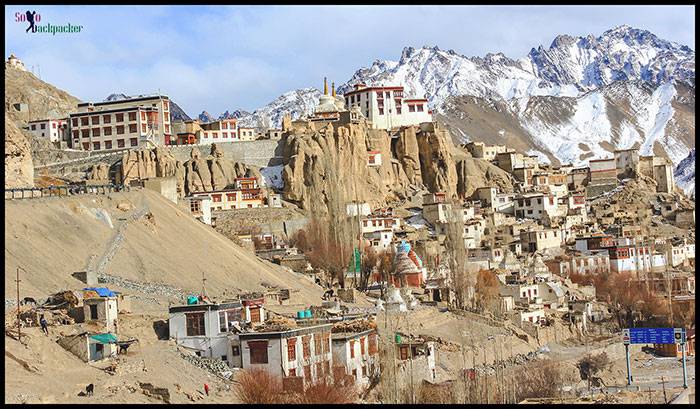
Shared Taxis
Taxis can be used for travelling around Ladakh. People travelling alone or in a small group can find shared taxis. Using shared taxis will not only reduce the cost of your trip but also reduce the pollution and the impact on the environment. Shared taxis are available to visit all the top attractions of Ladakh such as the Pangong lake, the Nubra valley and the Indus valley.
Hiring a Motorcycle in Ladakh
An alternative option is to rent a motorbike so that you can travel at your own pace wherever you want. However, note that roads are rough and sometimes very isolated. Only experienced riders should consider this option.
Plenty of options are available in Leh city for hiring a motorcycle. Typical cost for hiring a 500 cc Royal Enfield is approx Rs.1600 per day, while it is Rs. 1300 per day for a 350 cc Thunderbird or Bullet Classic. A Bajaj Avenger may cost you approx Rs. 1000 per day. You are expected to deposit a security amount of approx Rs.15000 (depend on the shops) while hiring the motorcycle. They only need the photocopy of your Driving License while renting out.
Note: Hired motorcycles from outside Leh (Manali or Delhi) are not allowed to ply in the Leh city. If you reach Leh by such motorcycles, you are supposed to leave that at your hotel in Leh and hire another vehicle in Leh. However, no such restrictions are there on the privately owned motorcycles.
5. Trekking in Ladakh
Trekking is one of the best way to discover the real Ladakh and enjoy the impressive landscapes. Many treks can be done in Ladakh, mostly between May and October. However, there are few winter treks also.
Chadar Trek
Chadar Trek is perhaps the most celebrated winter trek in India, other one may be the Kedarkantha Trek. It is basically a 10-days walk on the frozen Zanskar River during the harsh winter of Ladakh region. You don’t gain any altitude during the trek and most of the time keep walking on the frozen sheet of ice. So, what is so exciting about this trek?
Even though it is a simple walk on the frozen river, the trek is considered as difficult because of the surrounding conditions. It’s not like a simple walk on the floor. While walking on a frozen river, you have to be in good fitness, pay utmost attention and always be in good discipline to avoid any stupid activity. A simple mistake can be fatal during the trek. Imagine plunging in a river below sub-zero temperature (-30 Degree Celsius)! Hypothermia is just a couple of minutes away on this trek.
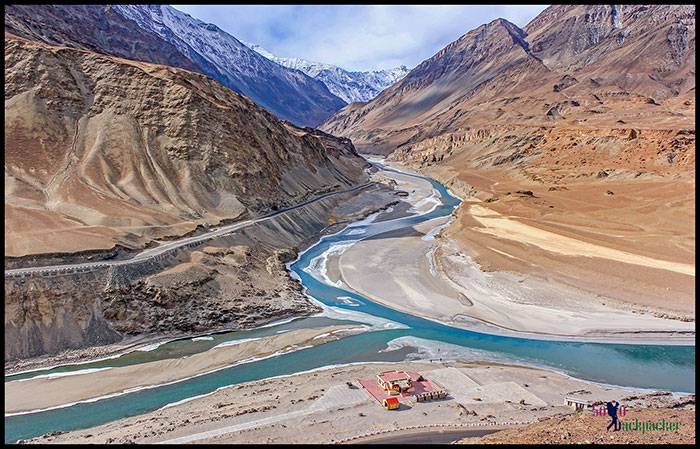
The trek normally starts from a village known as Chilling, where you can drive from Leh city. Then the walk starts on the famous Chadar (frozen Zanskar) towards Lingshed village, that may takes upto 4 days depending on the trek itinerary. At Lingshed, people spend one day before setting on the return journey to Chilling via the same route. Extended trek can go ON for 8 days one way.
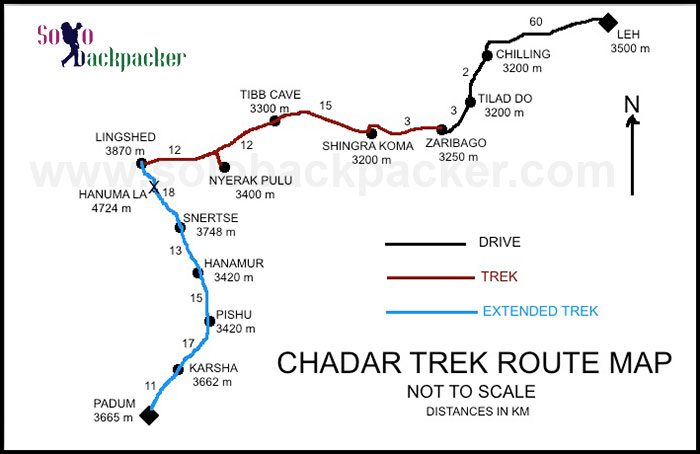
Because of the huge popularity, many agencies conduct this trek in the winter. If you want to do it solo, it is possible. Make sure that you are equipped with adequate food and proper warm clothes.
Markha Valley Trek
Markha Valley Trek can be considered as one of the best Tea House Trek in India. Every village on the trek route has homestays to offer food and accommodation. It also provides an excellent opportunity to get a glimpse of day to day life of local people in the rugged wilderness of Ladakh Region.
The trek starts from Chilling or Skiu Village and ends at Hemis Monastery. The total trek duration is approx 6 days if you start from Chilling Village. This trek is also possible from Spituk village, right near the Leh Airport. If you are short of time then you can hire a vehicle up to Zingchen Village.
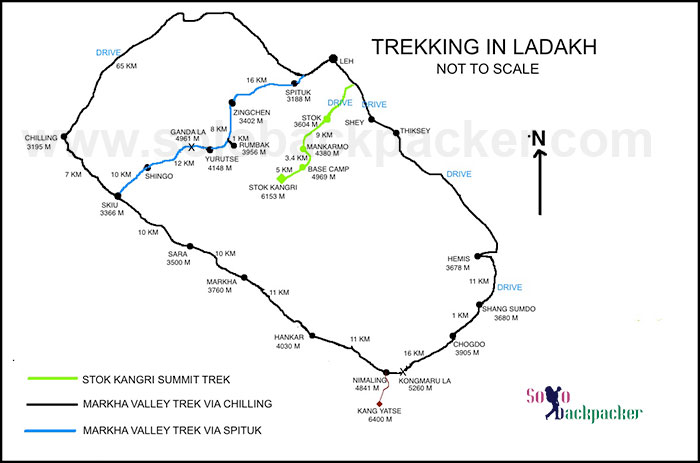
We attempted this trek from Spituk Village. However, somewhere between Zingchen and Yurutse village the guards of Hemis National Park didn’t allow us to move further, because we didn’t possess the valid permit. We were actually not aware about the permit requirements.
Snow Leopard Trek
This trek can be considered as the shorter version of Markha Valley trek from Spituk-Zingchen side. After Zingchen, people trek to Rumbak Village and spend 2-3 nights there at the village. During the daytime, they walk around on the mountains to get a sight of the Snow Leopard.
Dzukou Valley is a peaceful and enchanting destination in North East India: Dzukou Valley Trek in Nagaland
Although we returned from Hemis National Park without completing the Markha Valley Trek, but somehow we managed to enjoy this Snow Leopard Trek with the crew members from BBC. Snow Leopard is an elusive yet the most shouted animal for any winter trek in Ladakh Region. We camped for two nights in Hemis National Park, but couldn’t able to sight a Snow Leopard.
Sham Valley Trek
It is also famous as the Baby Trek in Ladakh. It is basically a village hopping trek in the Sham Valley of Ladakh, where you can enjoy the local village life and their traditional age-old monasteries.
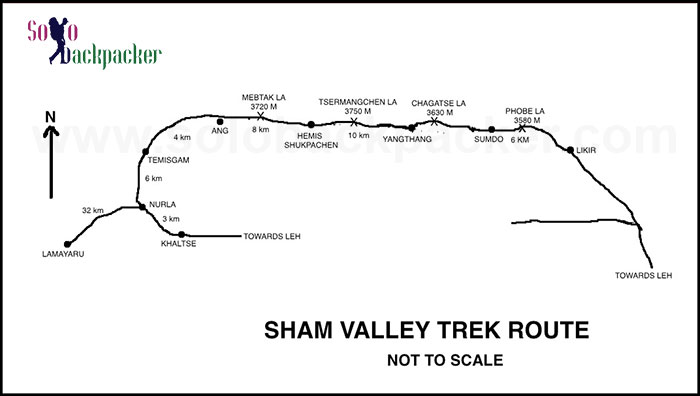
Stok Kangri Summit Trek
Stok Kangri is one of the highest mountain peak in India, where you can climb without a technical gear. That is why it becomes so popular among the trekking enthusiasts. The peak offers a panoramic view of Karakoram and Zanskar Ranges of the Himalayas.
The shortest route to the peak is via Stok village, but it is only advisable if you are already acclimatize in Ladakh. Otherwise, you can try to approach Stok Summit via Spituk-Zingchen village route as explained in Markha Valley Trek.
You need a valid permit from Indian Mountaineering Foundation (IMF) before climbing on Stok Kangri Peak. The permit cost is Rs 2500 per person. It can be arranged by any tour operator. If you want to attempt this peak without a tour operator then you can directly apply for a permit from IMF office at Mentokling Guest House And Apple Garden Restaurant, Changspa Road, Leh. While applying for the permit you have to submit a valid ID proof copy, a passport size photograph, a medical certificate ensuring your fitness for the trek and a disclaimer certificate ensuring your submission to voluntarily participate in this trek. It takes one day to issue this permit.
Ladakh to Spiti Valley Trek
There exists an ancient trade route between Ladakh Region and Spiti Valley. You can trek on that route from Tso Moriri Lake in Ladakh to reach Chicham or Kibber village in Spiti Valley. Since the trail passes through the maximum altitude of around 5600 meters over Parang La, this trek is also known as Parang La.
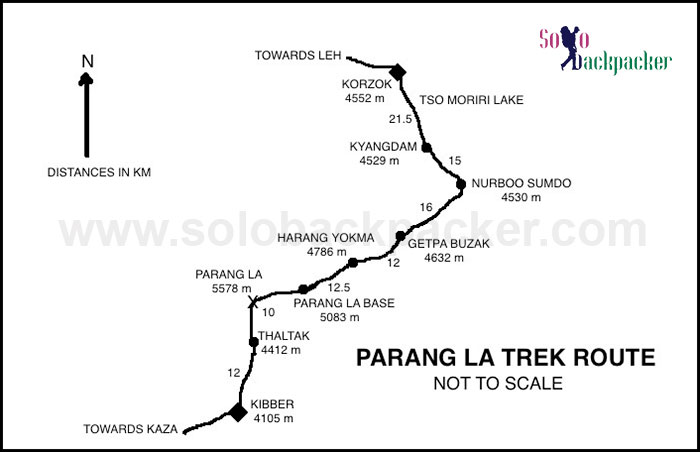
Except Stok Kangri Trek and Tso Moriri to Spiti Valley Trek, all other treks are perfectly doable in the winter also. Apart from the mentioned treks, there are scores of more treks (e.g. Hemis to Tso Moriri, Rangdum to Lamayaru via Kanji, Zanskar to Tso Moriri, Kang Yatse Summit Trek etc) in Ladakh Region to give you a thrilling adventure in the vast cold desert of Ladakh.
6. Main Places to Visit in Ladakh
Monasteries of The Indus Valley
As Ladakh has a large Buddhist community, the region has many monasteries of various sects. On the hill above the Leh Palace is the Namgyal Tsemo Gompa. Built during the 15th century, the monastery is well-known for its three-storey tall idol of Maitreya Buddha.
Shey used to be the summer capital of Ladakh. The monastery is famous for its huge copper statue of Buddha covered with gold. A few kilometres further is the impressive Thiksey monastery that looks like the Potala Palace in Tibet. The monastery houses a beautiful 15-metre tall statue of the Future Buddha.
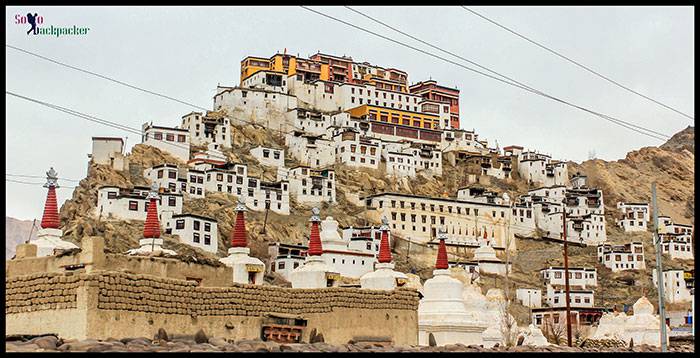
Most likely the most famous and well-known monastery in Ladakh is the Hemis monastery situated 50 km from Leh. It is the largest and wealthiest monastery in Ladakh and it is famous for the Naropa Festival which takes place every 12 years of the Ladakhi lunar calendar.
Apart from this, there are many small monasteries scattered in the villages of Leh that can be visited during a trip. Other notable monasteries are located in Phyang, Alchi, Likir, Lamayaru, Spituk, Chemrey, Phugtal and Stakna villages.
Nubra Valley
One of the top attractions in Ladakh is the Nubra valley which means “the valley of flowers”. Nubra is situated at a lower altitude than Leh and the temperatures are therefore slightly warmer. The famous Siachen Glacier, the highest battlefield in the world at the India-Pakistan border, is located at the end of the Nubra valley valley.
Read here about Kibber Village in Spiti Valley: Kibber Village in Spiti Valley
Hunder and Turtuk are the two most charming villages in Nubra valley. Hunder is popular for its sand dunes and you can go for a bactrian camel there. The village of Turtuk, inhabited by the Balti tribe, was opened to tourism in 2010. Diskit gompa is the largest monastery in the valley; located just 7 km from Hunder. Just next to the gompa, there is a huge 22-metre hight statue of Buddha which is visible from very far.
Pangong Tso
Pangong Tso (Tso means Lake), situated at 150 km from Leh at an altitude of 4,350 m, is 134 km long and more than half of its length lies in China. The lake is the place where 3 Idiots’ ending with Aamir Khan and Kareena Kapoor was shot. Pangong Tso lake is a breeding ground for many birds.
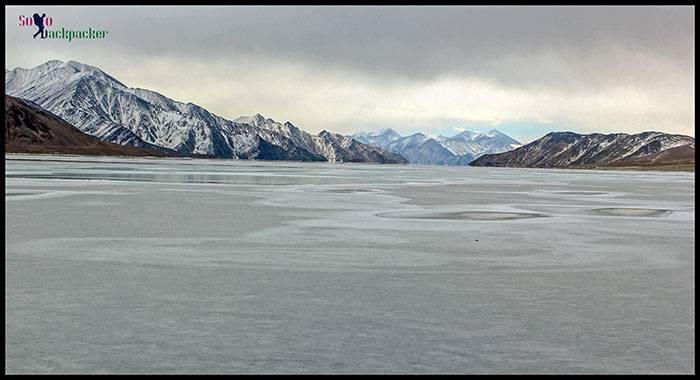
Tso Moriri
Tso Moriri is located 240 km from Leh in the south part of Ladakh. You need 2 days to visit this place. The lake is the breeding ground for the endangered black-necked crane. Here live the nomads known for moving from one place to the other. Tso Moriri, one of the highest brackish water lakes in the world, it is 19 km in length.
Hemis National Park
Hemis High Altitude National Park is globally famous for its Snow Leopards. It is believed to have the highest density of them in any protected area in the world.
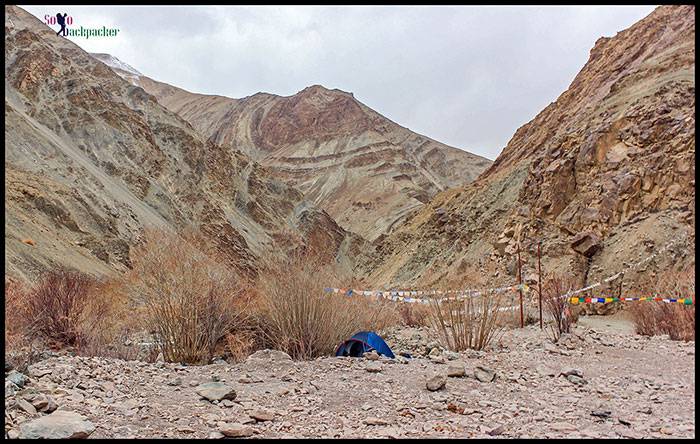
The Park is known for its unique biodiversity. It is home to the other endangered mammals like Asiatic ibex, Tibetan wolf, the Eurasian brown bear and the red fox. Other prominent animals in the park are Argali (Great Tibetan Sheep), Bharal (Blue Sheep), Shapu (Ladakhi Urial) and the Small mammals like the Himalayan marmot and mountain weasel.
Another beautiful trek in Uttarakhand: Valley of Flowers Trek
The Hemis National Park is a protected area and entry is not allowed without a valid permit. A permit can be obtained from the office of the Wildlife Warden in Leh City. Permit cost is Rs 20.
7. Tips For Travelling Responsibly in Ladakh
Save Water
Ladakh’s environment is fragile. Since Ladakh is a high-altitude desert, water is a precious resource. However, due to rapid urbanisation and a rapid increase in the number of hotels and guesthouses, especially in the city of Leh, people have abandoned centuries-old habits. Instead of using traditional dry compost toilets, flush toilets are used in hotels, guesthouses and also in households. This is putting a lot of pressure on the sources of water such as springs and it is contaminating the groundwater too. It is therefore advisable to save as much water as possible by taking short showers.
Reduce The Quantity of Garbage
Also, because Ladakh has limited waste management infrastructure, make efforts to reduce the quantity of garbage by consuming less packaged food and plastic bottles. It is estimated that more than 4 million plastic bottles are thrown away every year in Leh, during the tourist season. Instead of buying plastic bottles, refill your bottles from the hotel or from shops with filtered water refill service in Leh such as Dzomsa.
Use Shared Taxis
Use shared taxis so that the number of cars as well as the impact on the environment can be reduced. Glaciers in Ladakh are melting not just because of global warming but also because of local pollution from vehicles. The exhaust particles released by vehicles settle on the glaciers; the white glaciers become darker, absorb more heat from the sun and melt faster. The problem is that glaciers are the only source of water for Ladakhis.
Stay in Homestays
Staying in homestays will help distributing the money from tourism to local families staying in remote villages. Moreover, staying in homestay is a great experience for travellers. That’s the perfect opportunity to learn about the life of the villagers, try local food and learn a few words of Ladakhi. You can find homestays during treks and also in villages during the tours by car. Ask your guide or driver and he will show you the best places where you can stay.


